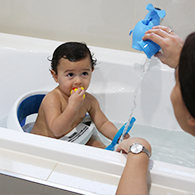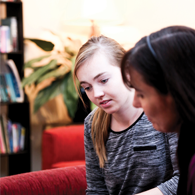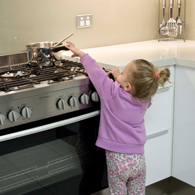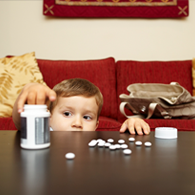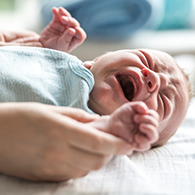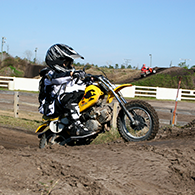Preventing burns and protecting kids this Winter
June 2018 – Experts across Sydney Children’s Hospitals Network are urging parents and caregivers to be extra vigilant around hot surfaces this winter to prevent scald and contact burns in children.
Last winter, 510 children were treated across The Children’s Hospital at Westmead and Sydney Children’s Hospital Randwick for new burn injuries, with the majority caused by hot drinks and foods, including soups and noodles.
Hot liquids or steam are the most common causes of burns, followed by contact and flame burns. These injuries can potentially be very serious and cause lifelong scarring, especially if not treated correctly.
Fourteen year old William suffered burns to his face, arms, stomach and leg after an aerosol can explosion in his backyard for pit two years ago. With burns to 9% of his body, William underwent multiple surgeries to clean and dress his wounds, including skin grafts to one arm.
“It was a horrible incident that no family should have to go through,” said William’s Mum, Natalie. “I believe fire safety should be a priority for the whole family. Education in the potentially severe outcomes of playing with fire or hot liquids can prevent these sorts of incidents from happening to other children.”
Head of the Burns Unit, Dr John Harvey says these accidents can happen in a second and applying the correct first-aid as soon as possible is vital.
“Burns are some of the most common childhood injuries. Toddlers are the group most at risk simply because they are curious and they move quickly and unpredictably so they often manage to reach hot items or surfaces, but the majority of these incidents are preventable.”
“The first aid approach can have a big impact but many adults do not know the correct first-aid procedure for burns.”
Dr Harvey said the only proven effective first aid for burns is 20 minutes of cool running water. Care should be taken to cool only the burn and not the whole child (which can lead to hyperthermia).
“If a burn occurs, the first step in treatment should always be cool running water.”
Using cool running water on the burn up to three hours after the incident can reduce the thickness of the burn as well as the time a burn will take to heal,” Dr Harvey said.
How you can prevent scalds in children
o Supervise young children at all times when they are in or around the kitchen and bathroom
o Keep hot food and drinks and all kitchen appliances out of reach of young children
o Take care when serving or walking with hot drinks when young children are around
o Check the temperature of the water before putting a young child in the bath.
How you can prevent other common burns in children
o Do not throw aerosols into a campfire or add accelerants of any type
o Always supervise children near a campfire
o Keep all electrical equipment which heat up out of reach of children, including heaters, kettles, irons and hair straighteners. Unplug after use and store away from children
o Store matches and lighters in a locked cabinet or where children can’t reach them
o Install a heat resistant guard around heaters or fireplaces and secure to the wall or floor
o Only use a treadmill when young children are not in the room, install a safety guard around it and unplug after use
o Closely supervise children around barbeques and do not use flammable liquids
o Install smoke alarms on all levels of your home and close to bedrooms.
If your child has suffered a burn
o Use cool running water on the burn for 20 minutes
o Remove clothing and jewellery, if possible
o Call 000 or seek medical help if you are unsure
o Never use ice, iced water, cream, gel, toothpaste or butter on a burn as they can make the burn worse.
For further information on burns prevention, visit the Kids Health website at www.kidshealth.org.au/burns-prevention
-ENDS-
Media Contact:
Sheri Locmayon
P: (02) 9845 3572
E: sherilyn.locmayon@health.nsw.gov.au
Tagged in:
